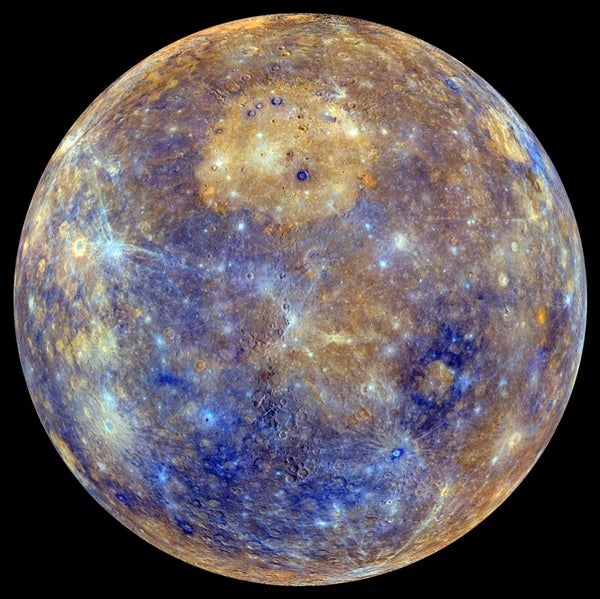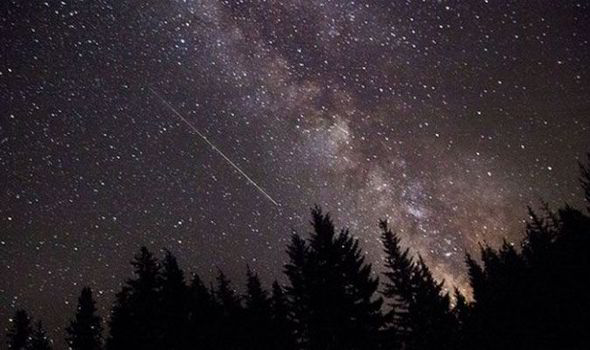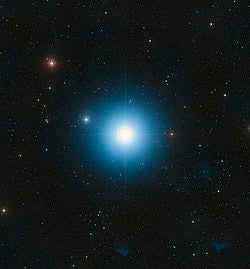Friday, December 16
After the Sun sets this evening, look low in the southwest for Mercury. For observers at 40° north latitude, the innermost planet lies 7° above the horizon 30 minutes after sunset. (It appears somewhat higher the farther south you live.) Binoculars will help you to pick the magnitude –0.2 object out of the twilight glow. A telescope reveals Mercury’s 8″-diameter disk, which appears 40 percent illuminated.
Saturday, December 17
If it weren’t for the presence of a bright Moon, Jupiter would dominate the morning sky. The giant planet rises around 2 a.m. local time and climbs 35° above the southeastern horizon by the time twilight begins. Jupiter shines brilliantly at magnitude –1.9 and shows a disk that spans 34″ when viewed through a telescope. A small scope also reveals the planet’s four bright moons, though you may have to hunt for one of them this morning. Diminutive Europa starts a transit at Jupiter’s eastern limb at 3:56 a.m. EST, just 17 minutes before the same moon’s shadow leaves the planet’s disk on the opposite limb.
Sunday, December 18
The variable star Algol in Perseus reaches minimum brightness at 10:46 p.m. EST, when it shines at magnitude 3.4. If you start watching it during the midevening hours, you can see it more than triple in brightness (to magnitude 2.1) over the course of about five hours. This eclipsing binary star runs through a cycle from minimum to maximum and back every 2.87 days. Algol appears nearly overhead in midevening and dips lower in the northwest after midnight.
Monday, December 19
Mars continues to put on a nice show these December evenings. It appears about 30° above the southwestern horizon once twilight fades to darkness, and it doesn’t set until after 9 p.m. local time. The magnitude 0.8 Red Planet currently lies among the background stars of Aquarius. A telescope shows the world’s 6″-diameter disk, though you’ll be hard-pressed to see any surface detail except under exceptional viewing conditions.
Tuesday, December 20
Last Quarter Moon occurs at 8:56 p.m. EST. The Moon doesn’t rise until a few minutes after midnight, however, by which time it will appear almost imperceptibly less than half-lit. The Moon spends the morning hours among the background stars of western Virgo.
Wednesday, December 21
The Ursid meteor shower peaks tonight. The shower’s radiant — the point from which the meteors appear to originate — lies in the constellation Ursa Minor, near the Little Dipper’s bowl. The radiant is visible in the north all night, but it climbs higher as dawn approaches. The waning crescent Moon won’t interfere much after it rises around 1 a.m. local time tomorrow morning, though your best views likely will come between 11 p.m. and 1 a.m. Observers with clear skies should be able to see 5 to 10 Ursid meteors per hour.
Earth’s winter solstice occurs at 5:44 a.m. EST. At that moment, the Sun reaches its farthest point south in the sky. The solstice marks the official beginning of winter in the Northern Hemisphere, and tonight has more hours of darkness than any other. From mid-northern latitudes, however, the earliest sunset occurred about two weeks ago and the latest sunrise won’t happen until early January.
Thursday, December 22
The waning crescent Moon appears just above Jupiter in this morning’s sky. The planet rises about a half-hour after our satellite, and both are clear of the horizon by 2 a.m. local time. They remain conspicuous until twilight is well underway. If you look carefully, you also should see the 1st-magnitude star Spica in their vicinity. Virgo the Maiden’s luminary lies about the same distance below Jupiter as the Moon stands above it.
Uranus reached opposition more than two months ago, but it remains a tempting target. The outer planet climbs highest in the south around 7 p.m. local time, when it appears more than halfway to the zenith. The magnitude 5.8 world lies in southern Pisces just 0.6° east-southeast of the 5th-magnitude star Zeta (z) Piscium. Although Uranus shines brightly enough to glimpse with the naked eye under a dark sky, binoculars make the task much easier. A telescope reveals the planet’s blue-green disk, which spans 3.6″.
Saturday, December 24
A lone bright star now hangs low in the south-southwest during early evening. First-magnitude Fomalhaut — often called “the Solitary One” — belongs to the constellation Piscis Austrinus the Southern Fish. From mid-northern latitudes, it appears below the Great Square of Pegasus and about 20° above the horizon. How solitary is Fomalhaut? The nearest 1st-magnitude star to it, Achernar at the southern end of Eridanus the River, lies some 40° away.
Sunday, December 25
This year provides a stunning “Christmas Star” for early evening viewers. Head outside during the deepening twilight and look to the southwest for the brilliant light of Venus. The brightest planet shines at magnitude –4.4 and shows up nicely from half an hour past sundown until it sets after 8 p.m. local time. A telescope reveals the planet’s 21″-diameter disk, which appears about 60 percent lit.
The Moon reaches apogee, the farthest point in its orbit around Earth, at 12:55 a.m. EST. It then lies 252,196 miles (405,870 kilometers) from Earth’s center.












